Vamos ser honestos: os consumidores não confiam nos profissionais de marketing.
Construir relacionamentos com os consumidores-alvo é desafiador. Hoje, todos nós somos bombardeados com mensagens de inúmeras marcas. Se você não conseguir se conectar com os consumidores de forma honesta e genuína, provavelmente não construirá um relacionamento duradouro.
Sua estratégia de marketing de conteúdo precisa colocar os clientes em primeiro lugar para realmente construir confiança com eles. As vozes deles são as mais importantes e devem ser ouvidas em seus esforços de marketing.
Conteúdo gerado pelo usuário (UGC) ajuda você a fazer exatamente isso. As empresas podem adicionar autenticidade e um toque pessoal atraente aos esforços de marketing com software de conteúdo gerado pelo usuário. É gratuito, fácil de criar e permite que você coloque o cliente no controle.
O que é conteúdo gerado pelo usuário (UGC)?
Conteúdo gerado pelo usuário (UGC) é qualquer tipo de conteúdo – vídeos, imagens, postagens de blog, depoimentos, postagens sociais, avaliações e outros meios – criado por um consumidor não remunerado e disponível publicamente para que outros vejam. Os profissionais de marketing geralmente usam UGC para trazer autenticidade aos seus esforços e construir confiança com seu público.
Em outras palavras, UGC é qualquer promoção gratuita do seu produto feita por seus fãs.
A maioria das empresas pensa no conteúdo gerado pelo usuário (UGC) como uma tática de marketing que apenas usuários de redes sociais podem usar. Mas você pode usar UGC para muito mais do que apenas sua estratégia de redes sociais. UGC pode ajudá-lo a criar melhor conteúdo de marketing, impulsionar seus esforços de SEO e geração de leads e elevar sua marca.
O que dá potência ao meio é como as empresas usam essa multiplicidade de material gerado pelo usuário. Apesar de sua natureza espontânea, compartilhar e re-compartilhar UGC pode ter um impacto significativo em empresas e clientes.
UGC não é necessariamente material que menciona especificamente seu produto. Também pode chamar a atenção para estilos de vida ou ideais semelhantes ao ethos da sua marca e ao público-alvo.
De onde vem o conteúdo gerado pelo usuário?
No passado, o conteúdo gerado pelo usuário era limitado pela parte "usuário" da equação. As pessoas sempre estiveram no centro do processo de criação de conteúdo, mas seus esforços eram limitados pelo que a tecnologia lhes permitia fazer.
Hoje, temos acesso a uma gama incrivelmente diversificada de plataformas e aplicativos que as pessoas usam para criar conteúdo, gerando mais volume e variedade do que nunca.
- Clientes: Considere vídeos de unboxing no TikTok ou postagens no Instagram cheias de elogios. Os clientes são provavelmente o grupo mais notável de quem você buscará UGC, seja porque você pediu ou porque eles optaram por compartilhar material sobre sua empresa por conta própria.
- Entusiastas da marca: Leais, apoiadores ou admiradores. Seja qual for o nome que você dê aos seus consumidores mais devotados, eles geralmente são os mais entusiasmados com seu produto. Como os devotos da marca são tão dedicados a algumas empresas, essa categoria de público é excelente para entrar em contato e solicitar material especial de UGC.
- Funcionários: Conteúdo gerado por funcionários (EGC) demonstra o valor e a paixão por trás do seu negócio. Por exemplo, fotos mostrando funcionários embalando ou um vídeo de um recente encontro da equipe. Este material dos bastidores contribui para a identificação da marca e demonstra autenticidade em plataformas sociais e de publicidade.
Por que o conteúdo gerado pelo usuário é tão importante?
O conteúdo gerado pelo usuário é eficaz por várias razões, sendo a mais proeminente o fato de ser uma versão de prova social. Mostra a potenciais novos consumidores que os clientes atuais estão satisfeitos com seu produto ou serviço. E se você está satisfeito, é provável que eles também fiquem. Endossos (mesmo de completos estranhos) importam para nós como consumidores.
Sites e plataformas dedicados exclusivamente a avaliações de usuários estão se tornando mais populares. Quase 95 por cento dos compradores estão lendo avaliações online antes de fazer uma compra. Os clientes estão procurando o Yelp para avaliações locais, a Amazon para avaliações de produtos de consumo e G2 para avaliações de software e serviços para ajudar todos os tipos de empresas a atrair mais conteúdo gerado pelo usuário.
Por que isso? Pense assim – pessoas semelhantes compram em lojas semelhantes. Você tem os mesmos interesses, desejos e necessidades, seja um novo par de jeans ou uma solução de software inovadora. É por isso que os profissionais de marketing constroem personas de usuário e adaptam suas estratégias para corresponder.
Quer aprender mais sobre Plataformas de Conteúdo Gerado pelo Usuário? Explore os produtos de Conteúdo Gerado pelo Usuário.
Tipos de UGC
O conteúdo gerado pelo usuário pode ser uma ótima ideia, especialmente se você encontrar o conteúdo enviado pelo usuário certo. Um bom conteúdo gerado pelo usuário geralmente traz certas vantagens sobre outros tipos de conteúdo. Ele pode envolver seu público de forma mais intensa e dar acesso a feedback valioso que geralmente não seria possível. O truque com UGC é encontrar o tipo certo para o seu negócio ou marca.
Abaixo estão os diferentes tipos de UGC.
UGC visual
O tipo mais prevalente e envolvente de UGC é o conteúdo visual. Por exemplo, a Chipotle celebrou o Cinco de Mayo com um desafio no TikTok chamado #ChipotleSponsorMe. Isso produziu muita interação nas redes sociais e material gráfico quando eles incentivaram seus clientes a enviar vídeos no TikTok expressando por que deveriam patrocinar seus clientes.
Quando os consumidores postam uma foto ou vídeo de sua nova compra nas redes sociais, eles geram UGC visual. Da mesma forma, quando um visitante tira uma foto do pôr do sol da piscina do hotel, isso é conteúdo visual ou UGC visual.
Depoimentos e comentários UGC
Depoimentos e comentários são mais propensos a aparecer depois que um consumidor recebeu seu produto ou experimentou os benefícios do produto. Por exemplo, os fornecedores de software vão querer coletar o máximo possível de vídeos UGC ou comentários escritos de clientes satisfeitos para continuar a comercializar seu produto.
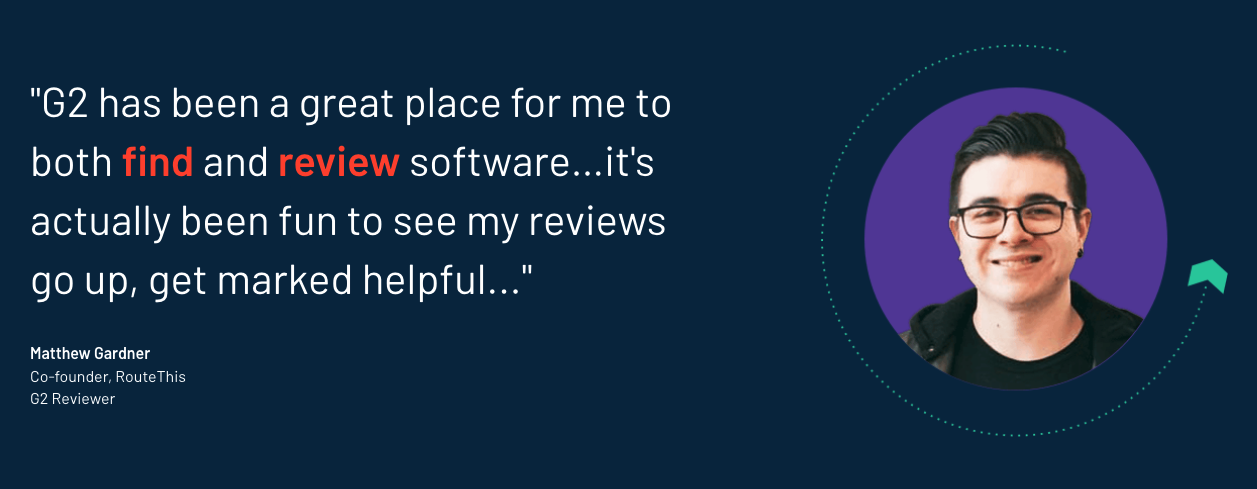 Fonte: G2.com
Fonte: G2.com
Usuários que têm consumidores satisfeitos em sites amigáveis a comentários (como Twitter ou Facebook) podem incluir feedback de clientes em seus materiais de marketing. A chave para usar depoimentos é garantir que você está coletando as informações mais úteis para seus potenciais consumidores.
Avaliações UGC
Avaliações deixadas em sites de produtos ou empresas desempenham um papel significativo no sucesso do produto. As avaliações de usuários são vitais para equipes de produtos, vendedores, profissionais de marketing e potenciais clientes. As avaliações ajudam a destacar seu serviço enquanto também constroem confiança entre seu produto e o cliente.
92% dos compradores B2B são mais propensos a comprar após ler uma avaliação confiável. As avaliações impulsionam compras, ajudam você a ganhar visibilidade e oferecem informações únicas para potenciais compradores. As avaliações são melhor mantidas abaixo dos produtos em suas páginas de produtos, para que as pessoas no fundo do funil possam lê-las e se sentirem informadas e prontas para comprar.
Relacionado: As pessoas não comprarão seu produto sem ler as avaliações primeiro. Leia mais sobre o impacto das avaliações online e sua importância para as empresas.
Benefícios do UGC
Além dos benefícios óbvios de economizar tempo e dinheiro na criação de conteúdo, há razões mais profundas e significativas pelas quais o conteúdo gerado pelo usuário deve ser importante para você e sua marca.
Constrói confiança
O propósito e benefício mais significativo do UGC é que ele constrói confiança entre sua marca e seu público, tanto com seus clientes atuais quanto potenciais. O consumidor experiente de hoje vê através das táticas de marketing brilhantes.
Eles querem (e preferem) histórias autênticas de pessoas reais, e essa conexão é crucial. Estamos passando mais tempo na frente de nossos computadores do que nunca, e está se tornando cada vez mais normal procurar comunidades online para conselhos e até mesmo inspiração.
Cria comunidade
Você cria uma comunidade ao convidar os compradores a se envolverem com sua marca, resultando em confiança. Não há nada melhor do que uma marca responder à sua história no Instagram que menciona seu produto, certo? Você se torna parte da família, fazendo você sentir uma conexão genuína com a própria marca e outros clientes.
Incentiva o engajamento
Quando outros veem esse senso de comunidade moldado pelo UGC, isso os incentivará a se envolver ainda mais com sua marca. E todos sabemos que mais engajamento significa mais olhos, o que significa mais vendas. É de longe a melhor métrica para medir a eficácia das campanhas de UGC.
Coleta insights
Com grande engajamento vem uma riqueza de conhecimento de seus clientes. Mesmo quando o feedback é aparentemente ruim, você está melhor por saber disso. O conteúdo gerado pelo usuário apresenta uma fonte inestimável de opiniões reais e honestas.
Como usar UGC em seus esforços de marketing
Então, agora que você está totalmente a bordo com o UGC, o que é e por que você precisa dele, você pode estar se perguntando: "Como eu uso o conteúdo gerado pelo usuário?"
Você está com sorte! Aqui estão algumas melhores práticas para usar UGC:
- Escolha o meio certo: O melhor lugar para executar uma campanha de UGC varia de marca para marca. Onde seus clientes atuais e ideais passam a maior parte do tempo? É nas redes sociais ou em sites de avaliações? É importante acertar isso na primeira vez, pois afetará toda a sua estratégia de marketing de conteúdo e execução.
- Seja claro no seu pedido: Independentemente dos meios que você decidir, sua pergunta deve ser clara e concisa. A ambiguidade pode matar seu entusiasmo inicial e engajamento. Escolha o tipo específico de conteúdo gerado pelo usuário que você deseja coletar. Se seu pedido for muito ambicioso ou confuso, as pessoas passarão para a próxima marca.
- Fique em cima disso: Você precisa estar envolvido para obter engajamento. Essa conversa bidirecional é o que torna o marketing de entrada mais eficaz do que o marketing de saída. Lembre-se de que monitorar seu engajamento será diferente dependendo do meio.
- Não tenha medo de mudar: Se sua campanha não estiver funcionando, pode não ser o momento ou lugar certo – talvez ambos! Dê um passo atrás e reavalie sua estratégia. Em caso de dúvida, entre em contato com seus clientes para obter feedback; nunca é demais ouvir diretamente da fonte.
Dica: Para campanhas de UGC nas redes sociais, você pode querer investir em software de monitoramento de redes sociais para ajudar com o trabalho pesado.
Exemplos de conteúdo gerado pelo usuário em B2C
Vamos ver como algumas marcas estão incorporando conteúdo gerado pelo usuário em suas campanhas. Esses esforços resultam em uma variação diferente de UGC na esperança de despertar sua imaginação para começar a pensar em conteúdo de uma maneira totalmente nova.
Go Pro
GoPro ajudou a iniciar a revolução do UGC alguns anos atrás, usando conteúdo de consumidores em sua campanha promocional. A GoPro é uma fabricante de equipamentos de vídeo que aproveita o conteúdo gerado pelo usuário para alimentar seu canal no YouTube. Seus três principais clipes são todos filmados por usuários e acumulam mais de 400 milhões de visualizações.
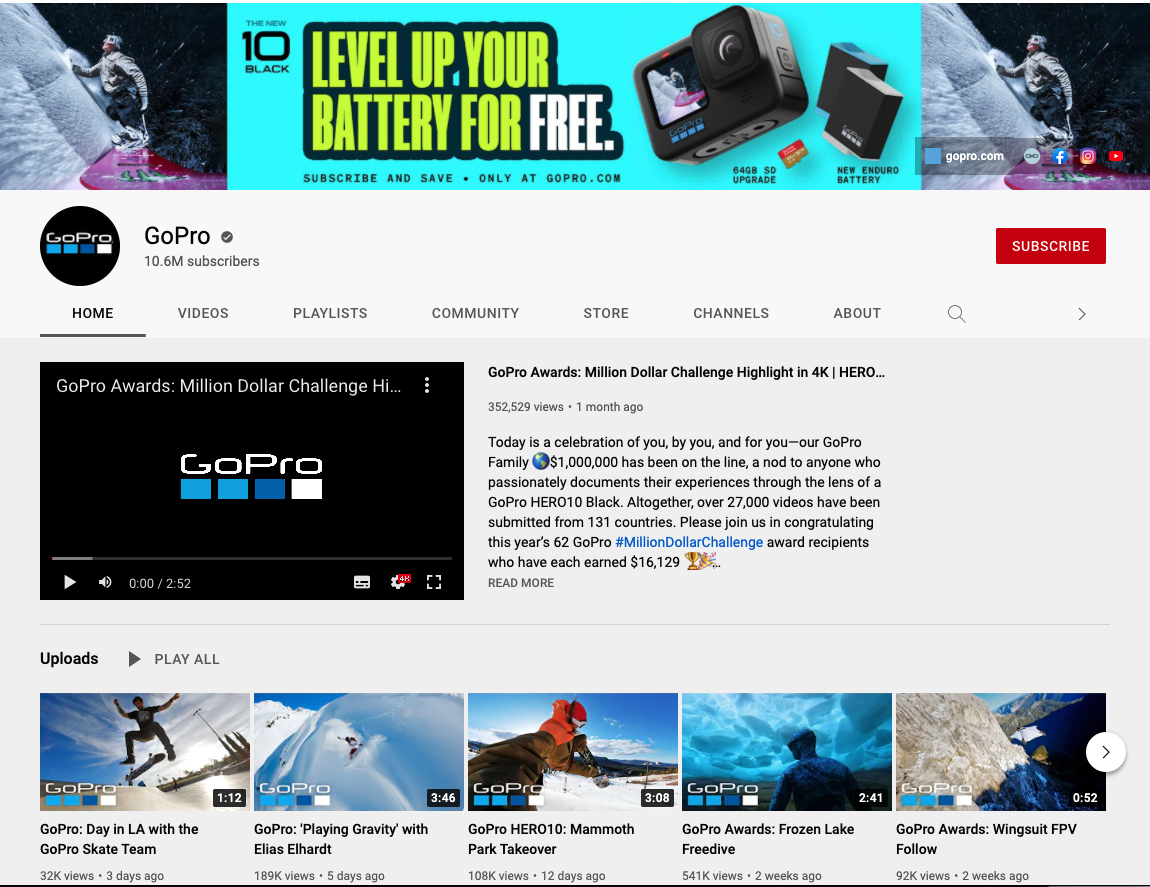
Fonte: Conta oficial da GoPro no YouTube
O uso de UGC pela empresa se tornou tão enorme que agora eles organizam sua própria cerimônia de premiação e promovem competições diárias de fotografia para incentivar seus usuários a serem criativos. A organização tem seu próprio canal na Virgin America e no console Xbox, onde os fãs podem assistir esquiadores de classe mundial descendo encostas, base jumpers saltando de marcos altos e pelicanos voando.
Morphe e #MorpheBabes
Morphe é um gigante da maquiagem bem-querido por influenciadores e maquiadores. A Morphe foca em vendas diretas digitais de itens de beleza e cuidados pessoais por meio de colaborações com influenciadores de redes sociais e nutre uma comunidade florescente de #MorpheBabes.
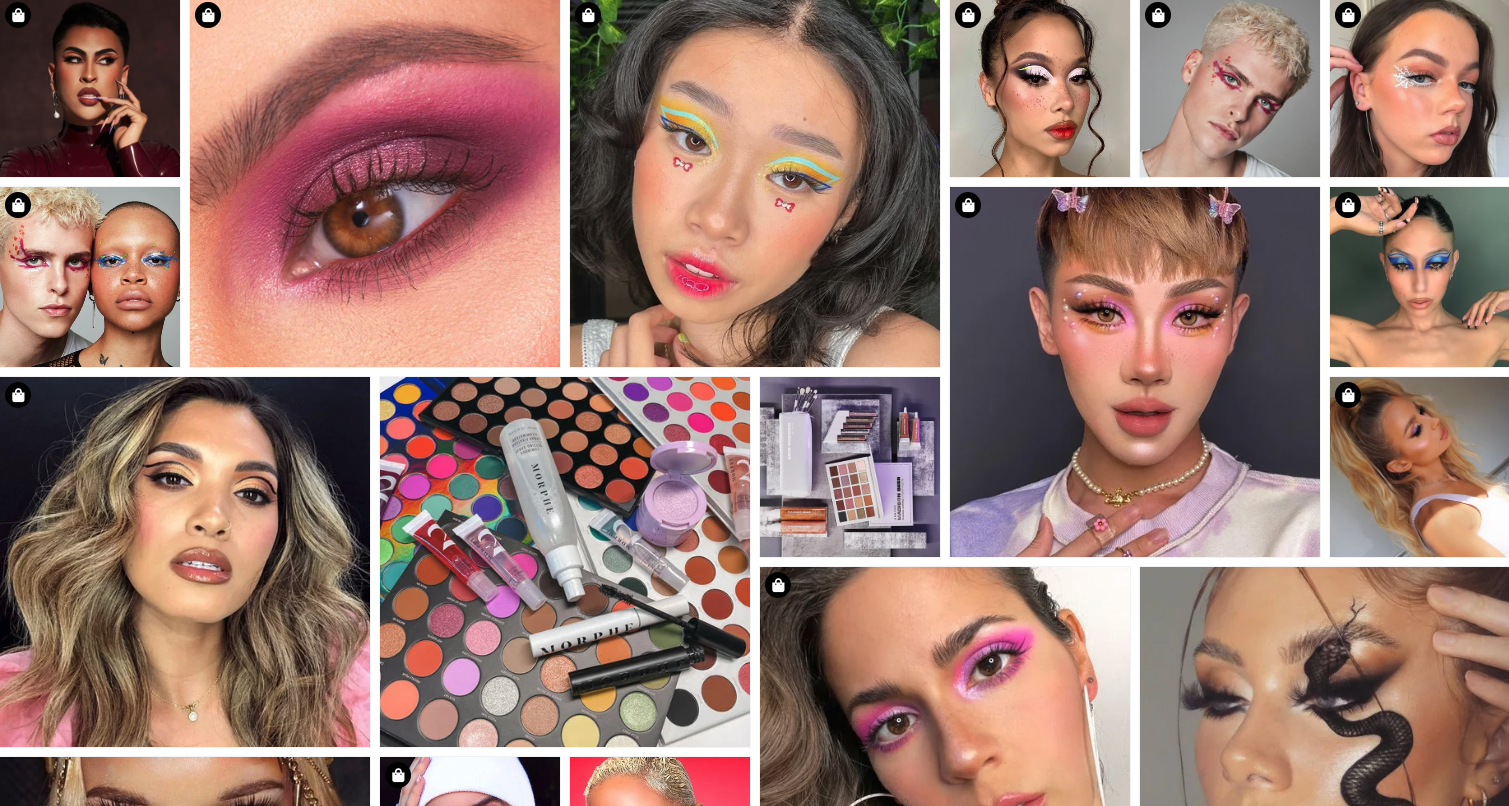
Fonte: Morphe.com
A Morphe viu a oportunidade de usar sua comunidade para promover sua marca, principalmente por meio de conteúdo gerado pelo usuário. A Morphe relatou um aumento de 2X na conversão ao empregar imagens de UGC em e-mails em comparação com e-mails que não incluíam UGC.
Mapiful e aumento de visitantes recorrentes
Mapiful, uma marca dedicada a ajudar os clientes a projetar lembranças de suas histórias mais queridas por meio de pôsteres personalizados, viu que os visitantes eram 115% mais propensos a repetir visitas com UGC no site. Esses dados ajudam a fornecer insights sobre os desejos e necessidades da comunidade. Os clientes interagem melhor com conteúdo que é autêntico, relacionável e relevante.
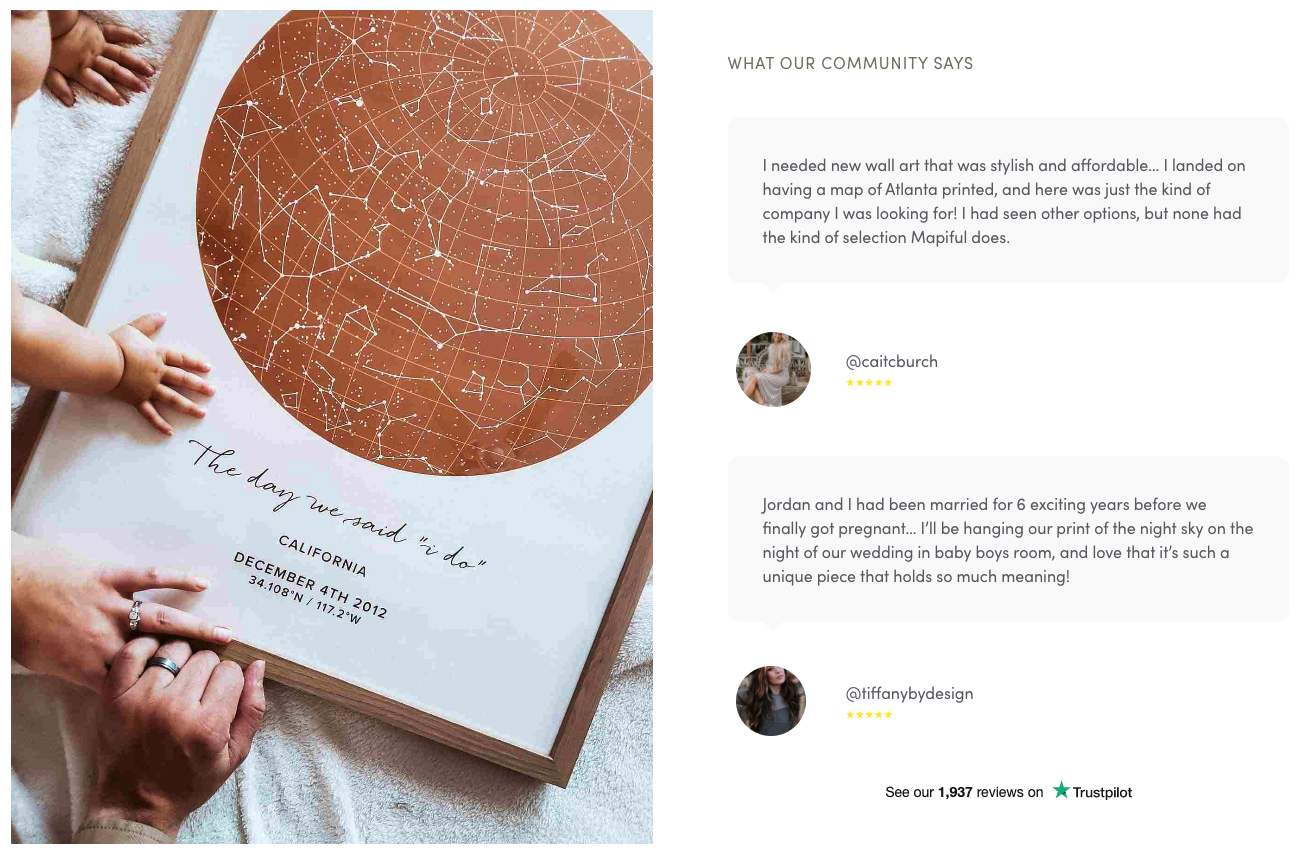
Fonte: Mapiful.com
Use UGC para manter o conteúdo consistentemente fresco e dinâmico. Ao atualizar frequentemente as galerias para refletir novos UGC, você é capaz de proporcionar uma experiência emocional para todos que visitam o site toda vez que o visitam.
Exemplos de conteúdo gerado pelo usuário em B2B
O UGC business-to-business (B2B) também pode ter sucesso com a execução adequada. Um conselho: lembre-se do seu público.
G2 Gives X Girls Who Code booths
Outra maneira de incentivar o engajamento é vinculando sua campanha a um propósito maior. Através da iniciativa G2 Gives, a G2 organiza estandes de avaliação em várias feiras comerciais, onde cada avaliação arrecada dinheiro para a Girls Who Code. A missão da Girls Who Code é simples: fechar a lacuna de gênero em campos relacionados a STEM.
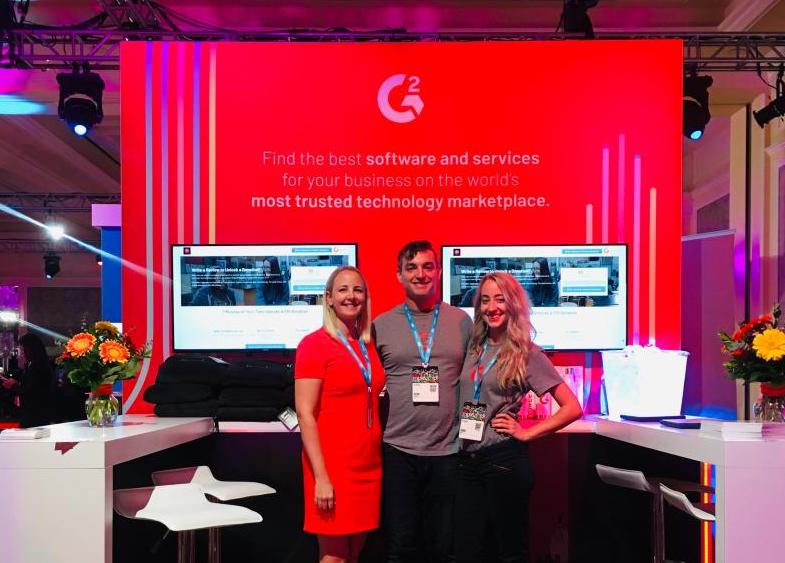
Fonte: G2.com
Os usuários deixam uma avaliação para um produto ou serviço de software que usam atualmente ou usaram no passado. Os compradores podem então encontrar avaliações de software ao procurar uma nova solução de software na plataforma G2. Além disso, as empresas podem então usar essas mesmas avaliações de várias maneiras em seu conteúdo.
Campanhas sociais da Adobe
Adobe descobriu que a melhor maneira de fazer as pessoas experimentarem seus produtos não era mostrar-lhes os recursos, mas mostrar como as pessoas os usam. Todo o feed do Instagram da marca é UGC.
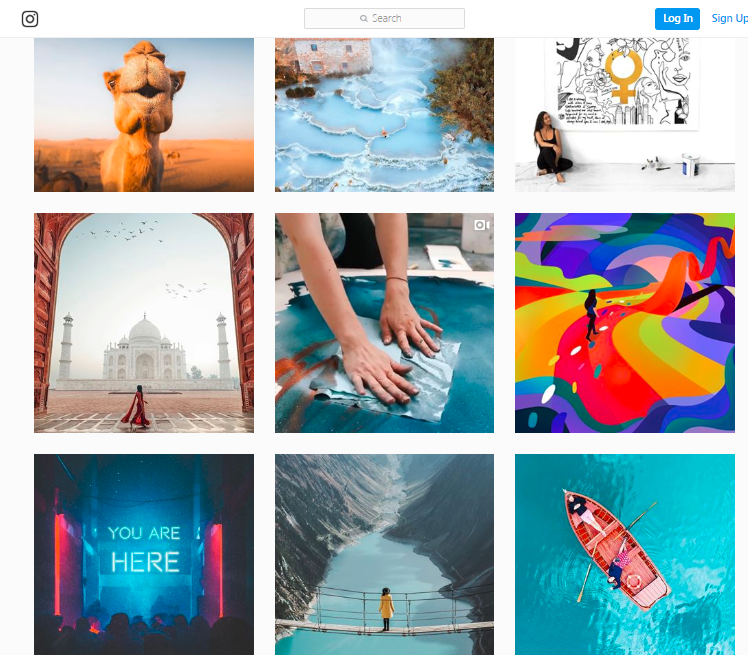
Fonte: @adobe
Eles executam várias campanhas a qualquer momento, mas o caso de uso B2B é verdadeiramente um golpe de gênio. A Adobe pede às pessoas que usam Photoshop, Illustrator, Lightroom e outros programas de software da Adobe em seus trabalhos para compartilhar seu trabalho. Este é o uso final para este conteúdo gerado pelo usuário, e ele causa um impacto visual tão grande.
Melhor software de conteúdo gerado pelo usuário (UGC)
O software de conteúdo gerado pelo usuário ajuda as organizações a reunir referências visuais de produtos ou empresas de redes sociais e outras fontes para reutilização em campanhas de marketing. Os departamentos de marketing podem empregar UGC como "prova social" para gerar interesse em produtos ou serviços. As empresas podem implantar fotografias e vídeos relevantes de usuários em vários sites de produtos, exibições ao vivo e anúncios sociais.
Uma solução deve atender aos seguintes critérios para ser considerada para inclusão na categoria de software de UGC:
- Reunir ativos gráficos conectados à marca de consumidores em redes sociais e outras redes proeminentes
- Fornecer ferramentas ou suporte na obtenção de direitos de mídia de usuários adequados
- Ajudar na coleta e gerenciamento desse material para re-compartilhamento conforme necessário
- Integrar-se com ferramentas como soluções de e-commerce ou sinalização digital para distribuir conteúdo adequado
*Abaixo estão as cinco principais plataformas de UGC com base em dados da G2 coletados em 18 de janeiro de 2022. Algumas avaliações podem ser editadas para clareza.
1. Later
Later é uma plataforma de UGC para planejar visualmente, agendar e analisar postagens para sites de redes sociais como Instagram, Facebook, Pinterest e Twitter. Ele permite que os usuários otimizem e agendem suas postagens a partir de um único painel.
O que os usuários gostam:
"Adoro o layout do mês. Ele me permite visualizar nossas postagens para o mês de forma visual, clara e útil. Também gosto que você possa visualizar sua grade a partir da plataforma para ver como todas as suas postagens ficarão alinhadas no seu perfil.
A seção da biblioteca de mídia também é útil, pois você pode marcar fotos com rótulos específicos (usado ou não usado) e até adicionar notas às fotos."
- Avaliação do Later, Rachel D.
O que os usuários não gostam:
"Agendar suas histórias não é o mais fácil. Não integra com Shopify ou Etsy, então se eu quiser marcar um produto, tenho que agendar a postagem para postá-la manualmente e depois copiar e colar, marcar o produto e salvar. Um pequeno problema, mas demorado."
- Avaliação do Later, Adriana (Adri) L.
2. Bazaarvoice
Bazaarvoice é uma plataforma de interação com o consumidor que permite que as empresas tenham controle total sobre a coleta, exibição e compartilhamento de UGC globalmente. Isso inclui classificações, avaliações, perguntas e respostas, conteúdo visual e social.
Marcas e varejistas confiam na tecnologia e expertise da Bazaarvoice para aumentar as vendas, ampliar o alcance, receber dados acionáveis e construir defensores devotados.
O que os usuários gostam:
"Adoro os insights e a facilidade de uso que a Bazaarvoice oferece. Este serviço facilita o rastreamento de avaliações, sentimento do cliente e como nos comparamos com nossos concorrentes. Sua equipe de Sucesso do Cliente também é incrível - nunca fiquei confuso por muito tempo graças às suas respostas rápidas e chamadas quinzenais que têm com minha equipe!"
- Avaliação do Bazaarvoice, Keenan H.
O que os usuários não gostam:
"O serviço de syndication multi-varejista é ótimo, mas não é facilmente acessível para uma pequena marca. Gostaria que houvesse um serviço graduado que permitisse que marcas menores tivessem algumas avaliações em várias plataformas."
- Avaliação do Bazaarvoice, Jasmin E.
3. Dash Hudson
Dash Hudson é uma ferramenta de marketing visual que serve como um balcão único para empresas, ajudando-as a analisar padrões, acelerar o crescimento e aumentar os níveis de engajamento. A plataforma pode ajudar as equipes a obter mais clientes, fornecendo insights acessíveis, relevantes e precisos.
O que os usuários gostam:
"Usei muitas plataformas diferentes ao longo dos anos, mas nada supera o Dash Hudson. Não só o atendimento ao cliente é impecável, mas a própria ferramenta também torna muito mais fácil encontrar UGC de qualidade. Ele utiliza um recurso de relatórios que tira muito do trabalho árduo de provar o ROI."
- Avaliação do Dash Hudson, Alison A.
O que os usuários não gostam:
"Não gosto da capacidade de ver análises em postagens de Reels, e às vezes não podemos olhar os relatórios com certas janelas de datas, o que pode ser frustrante."
- Avaliação do Dash Hudson, Samantha L.
4. Yotpo
Yotpo é uma ferramenta de marketing de e-commerce que ajuda as empresas a acelerar as vendas diretas ao consumidor. A plataforma fornece soluções baseadas em dados para classificações, adesão, marketing por SMS e outros conteúdos gerados pelo usuário. A Yotpo permite que as marcas desenvolvam experiências mais inteligentes e de maior conversão que acendem e sustentam conexões com os clientes.
O que os usuários gostam:
"Estamos adorando toda a segmentação de público específica que podemos fazer com o SMSBump da Yotpo. Poder segmentar partes do nosso público que sabemos que gostam de certos produtos, ou que serão especialmente receptivos a certas mensagens, realmente faz nosso programa de SMS prosperar."
- Avaliação do Yotpo, Nicole L.
O que os usuários não gostam:
"Às vezes, a plataforma pode ser um pouco lenta, mas tem melhorado ao longo do tempo."
- Avaliação do Yotpo, Julie S.
5. PowerReviews
PowerReviews é uma plataforma de software que permite que marcas e varejistas coletem, exibam e avaliem vários tipos de UGC em seus sites de e-commerce. As capacidades da plataforma incluem classificações e avaliações de produtos, perguntas e respostas, amostragem de produtos, imagem, vídeo e material social, e várias ferramentas de análise para avaliar o impacto do conteúdo gerado pelo usuário e medir o desempenho do produto.
O que os usuários gostam:
"A equipe da PowerReviews se tornou uma extensão de nossa pequena, mas poderosa equipe interna. Eles estão constantemente monitorando maneiras de melhorar nosso site e páginas de produtos. Estou animado para testar algumas das ferramentas de sentimento e análise de backend que eles lançaram.
Recomendo altamente ter uma funcionalidade de avaliação em qualquer site, e a Power Reviews é uma das melhores opções disponíveis."
- Avaliação do PowerReviews, Nicole B.
O que os usuários não gostam:
"As avaliações às vezes podem ser lentas para carregar no site, mas melhorias foram feitas para ajudar com a velocidade de carregamento."
- Avaliação do PowerReviews, Julie H.
As pessoas falam
Você não quer fazer parte da conversa? O conteúdo gerado pelo usuário pode ser o próximo passo para transformar seus clientes em defensores. Quando feito corretamente, esse tipo de criação de conteúdo econômico (e simplesmente eficaz) é potencialmente a chave para diferenciar sua marca em um mercado lotado.
Trabalhar com seus clientes para construir confiança – parece uma situação em que todos ganham para mim.
Com fome de mais? Descubra como avaliar sua estratégia de coleta de avaliações.

Bridget Poetker
Bridget Poetker is a former content team lead at G2. Born and raised in Chicagoland, she graduated from U of I. In her free time, you'll find Bridget in the bleachers at Wrigley Field or posted up at the nearest rooftop patio. (she/her/hers)
